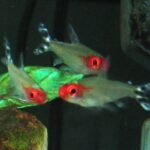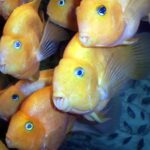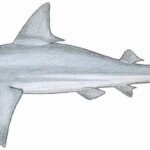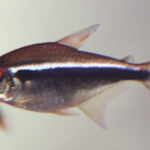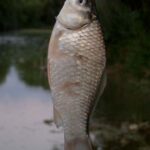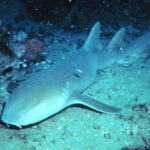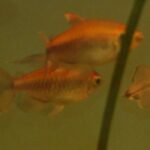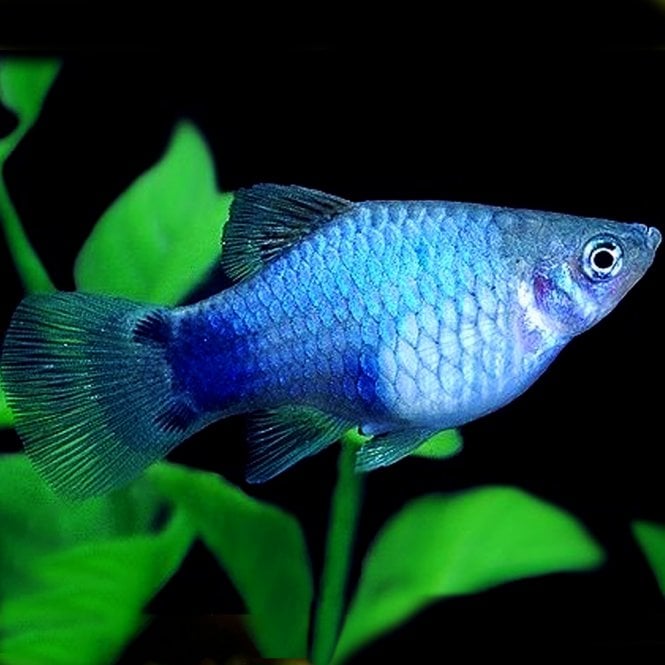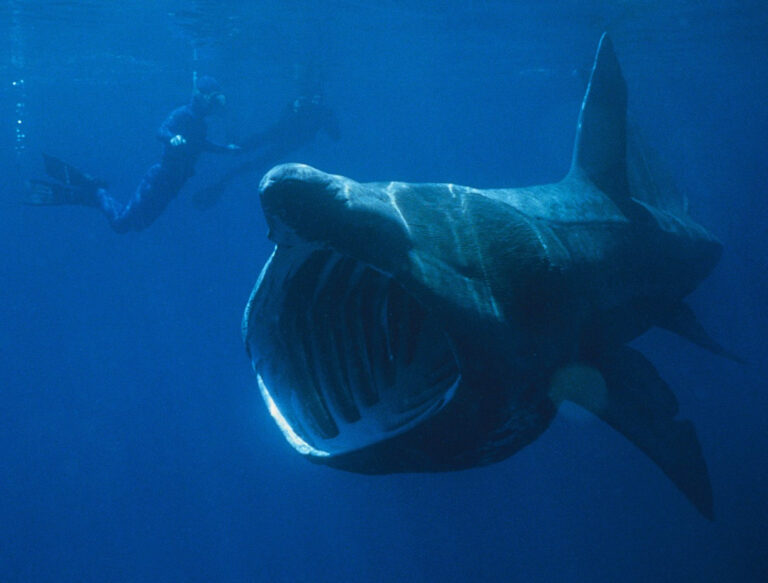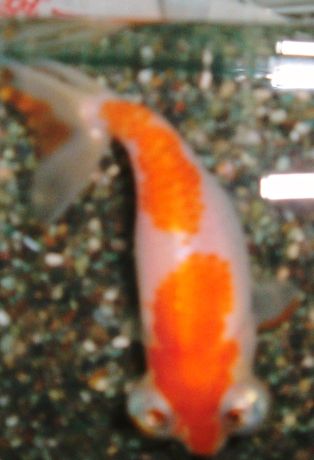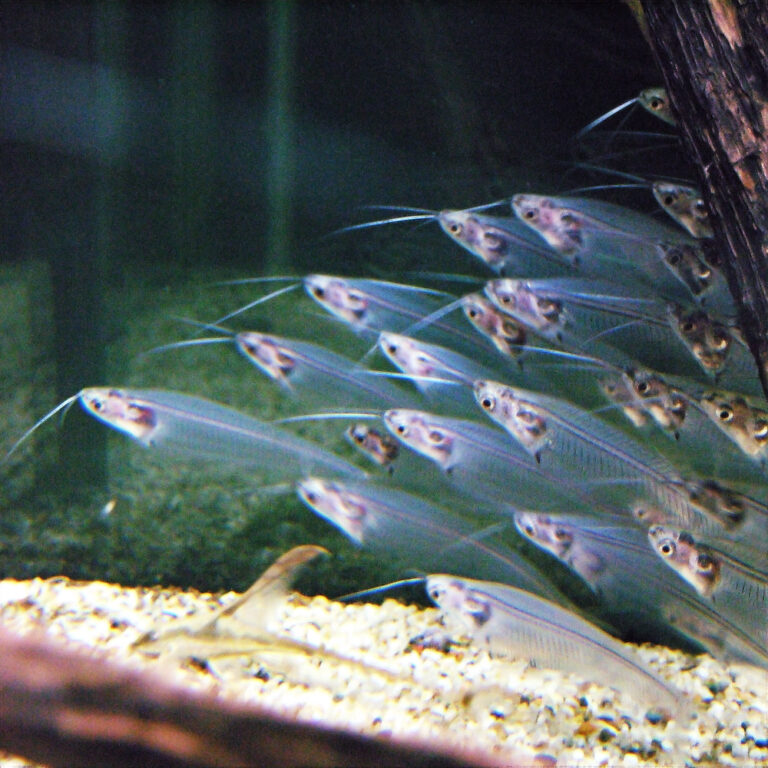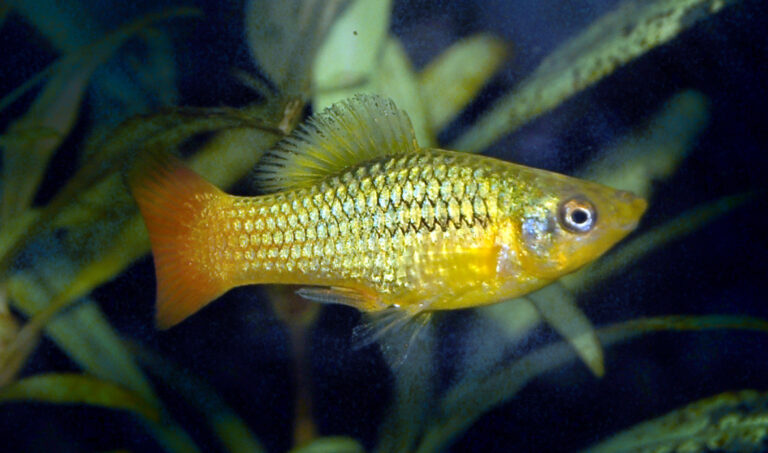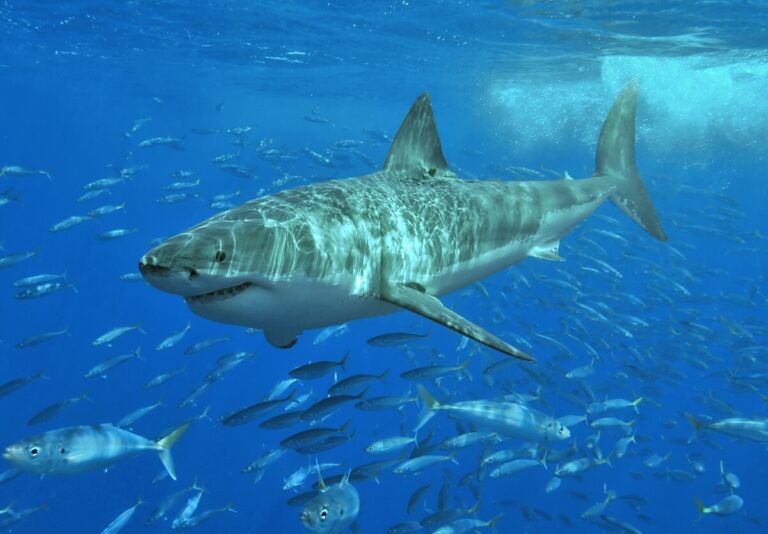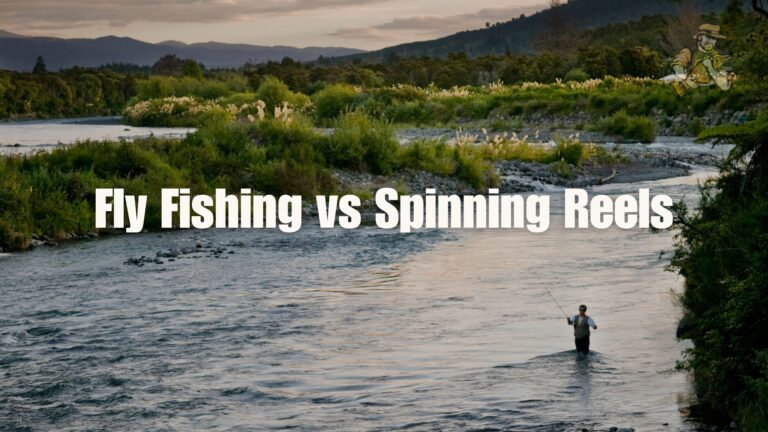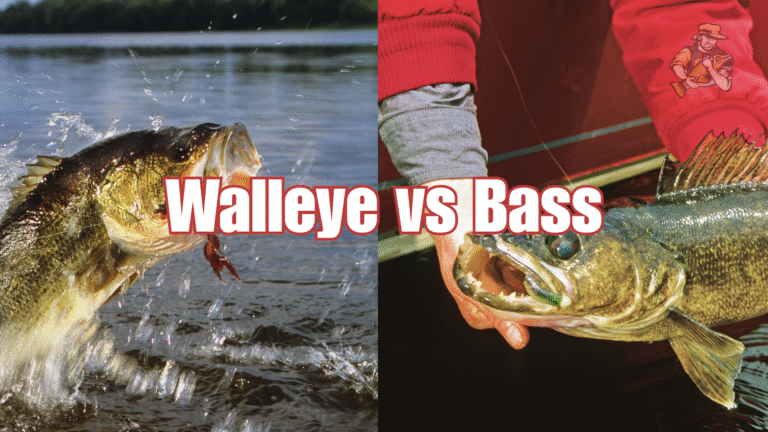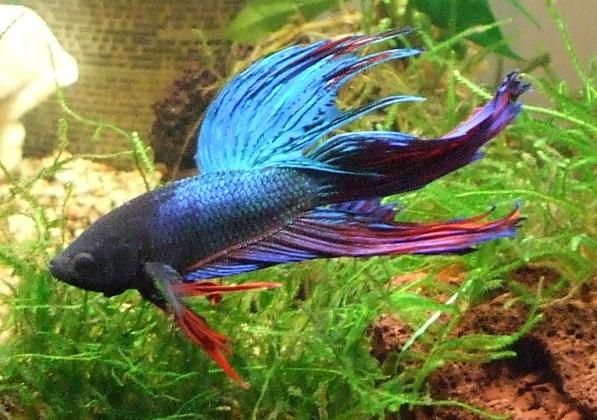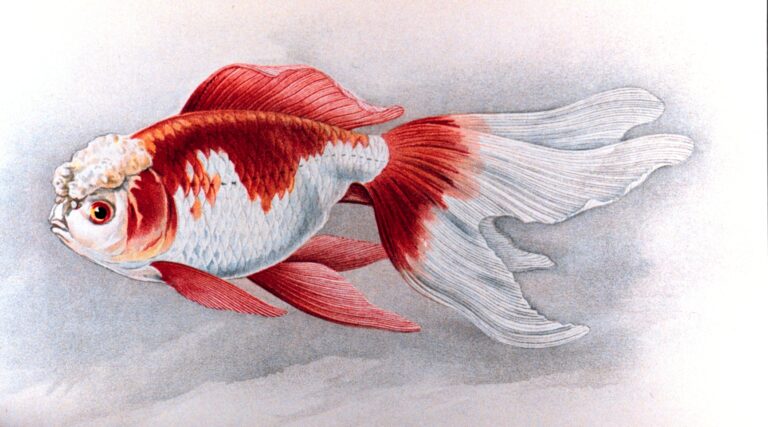Mickey Mouse Platy
By Ryan Maron | Last Modified: June 11, 2025
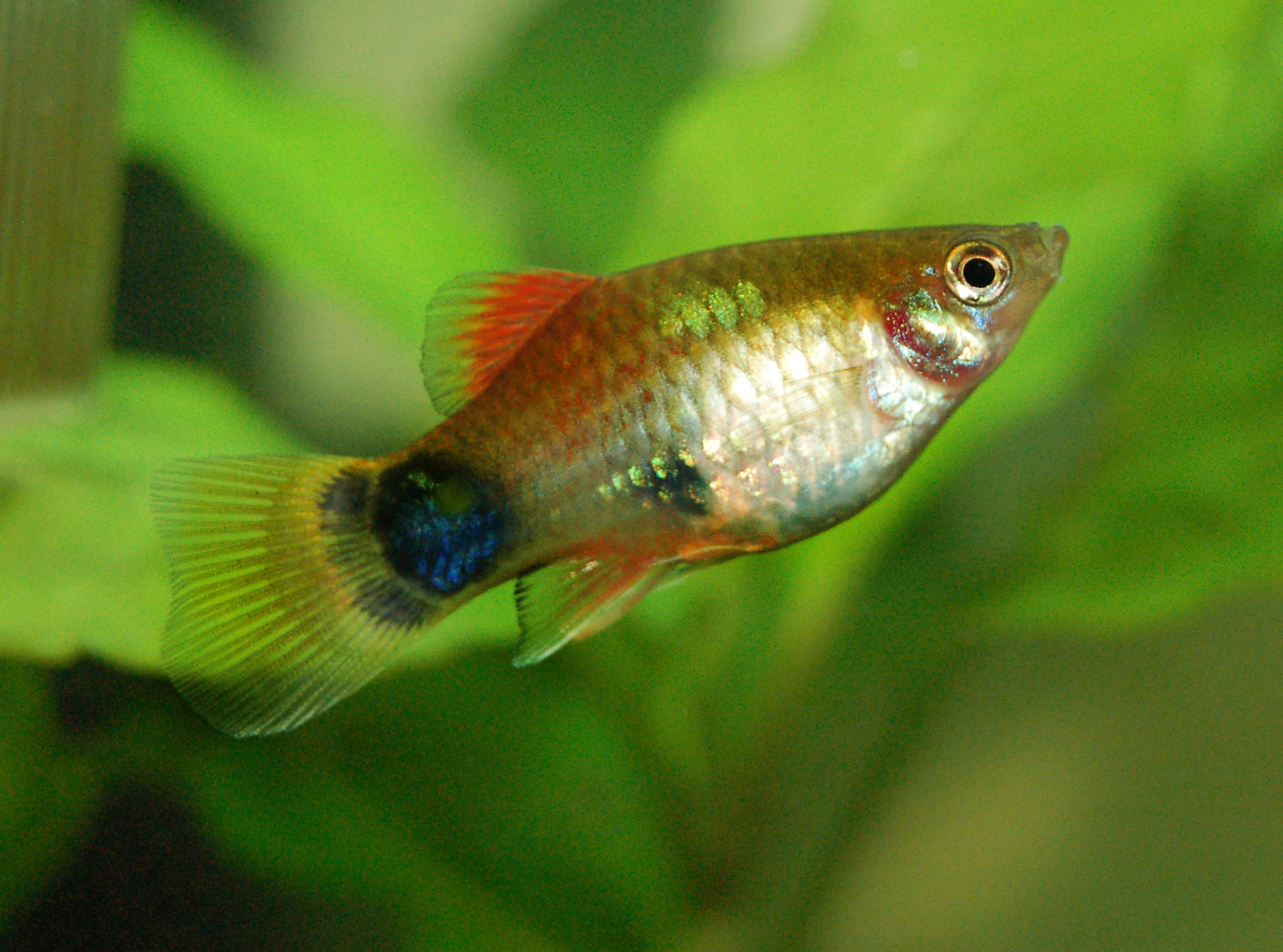
The Mickey Mouse Platy (*Xiphophorus maculatus*) stands as one of the most recognizable and beloved freshwater aquarium fish in the world, distinguished by its characteristic black tail spot pattern that remarkably resembles the iconic silhouette of Mickey Mouse ears. This small, vibrant livebearing fish belongs to the Poeciliidae family and represents a selectively bred variant of the common southern platyfish. Beyond its charming appearance, the Mickey Mouse Platy serves as an essential component in freshwater aquatic ecosystems, functioning as both a consumer of algae and small invertebrates and as a crucial prey species for larger predatory fish. Its ecological significance extends to its role in nutrient cycling within aquatic environments, where schools of these fish help maintain balanced food webs through their feeding behaviors and reproductive patterns.
| Feature | Details |
| Common Name | Mickey Mouse Platy |
| Scientific Name | Xiphophorus maculatus |
| Family | Poeciliidae |
| Typical Size | 4-6 cm (1.5-2.4 inches), 3-5 grams |
| Habitat | Freshwater streams, rivers, and ponds |
| Diet | Omnivorous – algae, insects, plant matter |
| Distribution | Central America, Mexico, worldwide aquaculture |
| Conservation Status | Least Concern |
Taxonomy & Classification
The Mickey Mouse Platy belongs to the order Cyprinodontiformes, representing one of the most diverse groups of freshwater fish species worldwide. Within the family Poeciliidae, *Xiphophorus maculatus* shares evolutionary relationships with other prominent livebearers including guppies, mollies, and swordtails. The genus *Xiphophorus* encompasses approximately 28 recognized species, with the Mickey Mouse Platy representing a selectively bred ornamental variety rather than a distinct subspecies.
Taxonomic classification places this species within the suborder Cyprinodontoidei, characterized by their specialized reproductive strategies and adaptations to variable freshwater environments. The species name “maculatus” derives from the Latin term for “spotted,” referencing the natural pigmentation patterns that selective breeding has enhanced to create the distinctive Mickey Mouse appearance. Genetic studies have revealed that the Mickey Mouse pattern results from specific allelic combinations affecting melanophore distribution, particularly concentrated in the caudal peduncle region.
Recent phylogenetic analyses indicate that *X. maculatus* diverged from its closest relatives approximately 2-3 million years ago during the Pliocene epoch. This evolutionary timeline coincides with significant geological changes in Central America, suggesting that geographic isolation played a crucial role in species differentiation. The molecular markers used in taxonomic identification include mitochondrial DNA sequences, particularly the cytochrome oxidase I gene, which serves as a reliable barcode for species verification.
Physical Description
The Mickey Mouse Platy exhibits remarkable sexual dimorphism and color variation, with adult specimens typically measuring 4-6 centimeters in total length. Males generally display more vibrant coloration and maintain slightly smaller body sizes compared to females, who develop fuller, more rounded abdomens due to their livebearing reproductive strategy. The species’ most distinctive feature remains the characteristic black markings at the base of the caudal fin, forming the recognizable “Mickey Mouse” pattern through selective breeding programs.
Body morphology follows the typical platy configuration with a laterally compressed form, moderate depth-to-length ratio of approximately 1:2.5, and a terminal mouth positioned for surface and mid-water feeding. The dorsal fin contains 10-12 soft rays, while the anal fin modification in males forms the gonopodium, a specialized reproductive structure containing 8-10 modified rays. Females retain the standard fan-shaped anal fin configuration with 10-12 rays.
Coloration patterns vary extensively through selective breeding, ranging from bright orange and yellow base colors to red, blue, and calico variations. The melanophore distribution creating the Mickey Mouse pattern involves concentrated pigment cells in three distinct areas: one large circular spot at the caudal peduncle base and two smaller spots positioned dorsally and ventrally, creating the characteristic “head and ears” silhouette. Scale counts typically range from 26-28 along the lateral line, with 8-9 scales above and 7-8 scales below the lateral line series.
Habitat & Distribution
Wild populations of *Xiphophorus maculatus* naturally inhabit the freshwater systems of eastern Mexico, Guatemala, Belize, and Honduras, occupying diverse aquatic environments from slow-moving rivers to cenotes and coastal lagoons. These fish demonstrate remarkable adaptability to varying water parameters, thriving in temperatures ranging from 18-28°C and pH levels between 6.5-8.5. Natural habitats typically feature abundant vegetation, moderate water flow, and complex substrate compositions that provide shelter and foraging opportunities.
The species shows strong preference for shallow, well-vegetated areas where water depths range from 0.5-3 meters. These environments offer optimal conditions for their feeding ecology and reproductive behaviors, with dense aquatic plant communities providing protection from predators and abundant invertebrate prey. Water chemistry in native habitats generally exhibits moderate hardness levels between 150-300 ppm and dissolved oxygen concentrations maintained above 5 mg/L through natural photosynthetic processes.
Anthropogenic introduction has established populations throughout tropical and subtropical regions worldwide, including parts of the southern United States, Southeast Asia, and various Pacific islands. These introduced populations often occupy similar ecological niches to their native counterparts, adapting to local water conditions and integrating into existing freshwater food webs. The species’ tolerance for temperature fluctuations and water quality variations has facilitated successful establishment in diverse geographic regions, though population density and genetic diversity may vary significantly from native populations.
Climate change impacts on natural habitat ranges remain a concern, as rising temperatures and altered precipitation patterns affect water levels and chemistry in native Central American watersheds. Conservation efforts focus on maintaining habitat connectivity and water quality standards within the species’ historical range to ensure long-term population viability.
Diet & Feeding Behavior
The Mickey Mouse Platy functions as an opportunistic omnivore, exhibiting flexible feeding strategies that adapt to seasonal availability and habitat conditions. Primary dietary components include filamentous algae, diatoms, small crustaceans, insect larvae, and detrital organic matter. Feeding activity peaks during early morning and late afternoon periods when water temperatures optimize metabolic processes and prey organisms show increased activity levels.
Foraging behavior involves systematic exploration of vegetated areas, substrate surfaces, and water column zones. These fish employ a combination of grazing and picking feeding techniques, using their protrusible mouths to extract food items from complex surfaces. Algae consumption plays a particularly important ecological role, as schools of platies can significantly impact algal biomass in shallow water environments, contributing to nutrient cycling and water clarity maintenance.
Seasonal dietary shifts reflect prey abundance patterns, with higher protein intake during warmer months when invertebrate populations peak. During cooler periods, plant matter and algae comprise larger portions of their diet, demonstrating physiological adaptations to variable resource availability. Juvenile feeding patterns emphasize smaller prey items including rotifers, copepod nauplii, and microscopic algae, gradually transitioning to adult feeding strategies as fish mature.
Feeding frequency varies with water temperature, age, and reproductive status. Adults typically feed 5-8 times daily in optimal conditions, consuming approximately 3-5% of their body weight. Reproductive females increase food intake by 15-20% to support egg development and gestation, while males may reduce feeding frequency during active breeding periods. This feeding behavior pattern closely resembles strategies observed in other platy fish varieties within the same genus.
Behavior & Adaptations
Mickey Mouse Platies exhibit complex social behaviors centered around loose schooling patterns and hierarchical structures within groups. Schools typically consist of 6-15 individuals, with larger aggregations forming during feeding or spawning periods. Social hierarchies develop based on size, age, and reproductive status, with dominant individuals securing preferred feeding territories and prime spawning locations.
Swimming patterns demonstrate adaptation to their native shallow-water environments, with frequent vertical movement between surface and benthic zones. These fish display remarkable agility in navigating dense vegetation, utilizing rapid acceleration and precise maneuvering to escape predation attempts. Behavioral studies indicate that platies can achieve burst swimming speeds of up to 8-10 body lengths per second when threatened.
Temperature-dependent behavioral modifications include reduced activity levels during cooler periods and increased metabolic processes at optimal temperatures. These fish demonstrate behavioral thermoregulation by seeking warmer microhabitats during temperature fluctuations, often congregating near shallow, sun-exposed areas or thermal spring inputs in natural environments.
Stress responses involve rapid color changes, increased schooling behavior, and modified feeding patterns. Chronic stress can suppress immune function and reproductive output, making behavioral monitoring valuable for population health assessments. Communication occurs through visual displays, including fin positioning, color intensity changes, and specific swimming patterns that convey territorial boundaries and reproductive readiness.
Territorial behavior becomes pronounced during breeding periods, with males establishing and defending small territories around optimal spawning sites. These territories typically encompass 0.5-1 square meter areas featuring appropriate vegetation cover and water flow characteristics essential for successful reproduction.
Reproduction & Life Cycle
The Mickey Mouse Platy employs internal fertilization and viviparity, giving birth to fully developed fry rather than laying eggs. Sexual maturity occurs at approximately 4-6 months of age, with females capable of storing sperm for multiple reproductive cycles following a single mating event. Gestation periods range from 24-30 days, influenced by water temperature, female age, and nutritional status.
Mating behaviors involve elaborate courtship displays where males pursue females using rapid swimming patterns, fin displays, and positioning behaviors designed to demonstrate fitness and genetic quality. The gonopodium, modified from the anal fin, facilitates sperm transfer during brief copulatory events lasting 1-3 seconds. Successful fertilization rates in natural populations typically exceed 85% under optimal environmental conditions.
Brood sizes vary considerably, ranging from 10-40 fry per reproductive cycle, with larger females generally producing more offspring. Fry measure approximately 6-8 millimeters at birth and possess fully developed fins, digestive systems, and swimming capabilities. Parental care remains minimal, with adults showing no protective behaviors toward offspring, leading to natural selection pressures that favor rapid growth and predator avoidance.
Reproductive frequency adapts to environmental conditions, with females capable of producing new broods every 4-6 weeks during optimal seasons. Population turnover rates in natural environments suggest average lifespans of 2-3 years, though some individuals may survive up to 4 years under favorable conditions. Genetic diversity maintenance depends on population size and breeding pair variety, with inbreeding depression possible in isolated populations.
Environmental factors significantly influence reproductive success, including temperature stability, food availability, and water quality parameters. Optimal breeding conditions occur at temperatures between 24-26°C with abundant food resources and minimal disturbance, similar to the reproductive requirements observed in guppy breeding programs.
Predators & Threats
Natural predation pressure on Mickey Mouse Platies comes from a diverse array of aquatic and semi-aquatic species throughout their native range. Primary predators include larger fish species such as bass, pike, and cichlids that inhabit overlapping territories. Avian predators, particularly herons, kingfishers, and other piscivorous birds, pose significant threats to surface-feeding populations, especially in shallow water environments.
Aquatic invertebrate predators target different life stages, with dragonfly nymphs, diving beetles, and large water bugs consuming juvenile platies and occasionally overwhelming smaller adults. Predation pressure varies seasonally, with peak vulnerability occurring during reproductive periods when fish concentrate in shallow spawning areas and exhibit reduced escape responses.
Anthropogenic threats represent increasingly significant challenges to wild populations. Habitat modification through dam construction, agricultural runoff, and urban development degrades water quality and eliminates critical spawning and nursery areas. Water pollution from pesticides, fertilizers, and industrial discharge affects reproduction rates, immune function, and survival across all life stages.
Climate change impacts manifest through altered precipitation patterns, temperature extremes, and habitat fragmentation that reduce population connectivity and genetic diversity. Introduced species competition poses additional pressure, particularly from non-native fish that occupy similar ecological niches or exhibit aggressive territorial behaviors.
Disease outbreaks, including viral, bacterial, and parasitic infections, can cause significant population declines, especially in areas with compromised water quality or high population densities. Parasitic infections from monogeneans, protozoans, and nematodes affect feeding efficiency, reproductive success, and predator avoidance capabilities.
Conservation challenges include maintaining genetic diversity in fragmented populations and protecting critical habitat corridors that support natural migration and breeding patterns. Population monitoring programs focus on assessing abundance trends, genetic health, and ecosystem connectivity to guide management decisions.
Conservation Status
The International Union for Conservation of Nature (IUCN) currently classifies *Xiphophorus maculatus* as Least Concern, reflecting stable population trends across most of its native range. However, localized population declines have been documented in areas experiencing significant habitat modification or water quality degradation. Regional conservation assessments indicate varying status levels, with some populations facing increased pressure from development and agricultural activities.
Population monitoring programs conducted throughout Central America reveal generally stable abundance levels, though data quality varies significantly between countries and regions. Mexico maintains the most comprehensive monitoring systems, documenting population trends in major watersheds and implementing habitat protection measures in critical breeding areas. Guatemala and Belize have initiated baseline population assessments but require expanded monitoring coverage to establish long-term trend data.
Habitat protection efforts focus on maintaining water quality standards, preserving riparian vegetation, and regulating agricultural runoff in key watersheds. Several protected areas within the species’ native range provide habitat security, including portions of the Mesoamerican Biological Corridor that support connectivity between fragmented populations.
Captive breeding programs contribute to conservation through genetic repository maintenance and potential reintroduction capabilities. However, domestic aquarium strains may possess reduced genetic diversity compared to wild populations, limiting their conservation value for restoration projects. Research programs investigate genetic management strategies to maintain wild-type characteristics in captive populations.
International trade regulations through CITES do not currently apply to this species due to its stable conservation status and widespread aquaculture production. However, monitoring of trade impacts on wild populations continues through various national and regional programs to detect potential conservation concerns before they become critical.
Climate change adaptation strategies include habitat corridor establishment, water resource management, and population genetics research to identify resilient genetic lineages capable of surviving changing environmental conditions.
Human Interaction
The Mickey Mouse Platy represents one of the most economically significant ornamental fish species in global aquaculture, with commercial production valued at millions of dollars annually. Major breeding operations span Asia, Europe, and the Americas, supplying domestic and international markets with various color strains and pattern combinations. Singapore, Malaysia, and Florida serve as primary export centers, distributing millions of specimens worldwide each year.
Aquarium hobby popularity stems from the species’ hardy nature, attractive appearance, and relatively simple care requirements. Beginner aquarists particularly favor these fish due to their tolerance for water quality fluctuations and peaceful temperament with most community fish species. Educational programs in schools and public aquariums frequently feature platies to demonstrate basic fish biology and reproductive processes.
Scientific research applications include genetics studies, developmental biology research, and environmental toxicology testing. The species serves as a model organism for investigating sex determination mechanisms, color pattern inheritance, and adaptive responses to environmental stressors. Research institutions worldwide maintain laboratory colonies specifically for scientific investigations.
Cultural significance varies among regions, with some Central American communities incorporating platies into traditional ecological knowledge systems and local conservation practices. Indigenous groups recognize these fish as indicators of freshwater ecosystem health and incorporate their abundance patterns into seasonal resource management decisions.
Economic impacts extend beyond direct aquaculture production to include supporting industries such as aquarium equipment manufacturing, fish food production, and pet retail operations. The ornamental fish trade provides employment opportunities in rural areas where alternative economic activities may be limited, particularly in developing countries with suitable climatic conditions for outdoor breeding operations.
Ecological concerns arise from escaped aquarium specimens establishing naturalized populations outside their native range, potentially competing with indigenous species or introducing diseases. Responsible aquarium keeping practices emphasize proper disposal methods and containment protocols to prevent unintentional introductions, similar to guidelines established for other livebearing fish species.
Interesting Facts
The Mickey Mouse Platy possesses remarkable genetic flexibility that allows for extensive color and pattern manipulation through selective breeding programs. Breeders have developed over 40 distinct varieties, including tuxedo, comet, and rainbow patterns, each representing specific genetic combinations affecting pigment cell distribution and expression. The Mickey Mouse pattern itself results from a dominant genetic trait that can be combined with various base colors to create unique strain variations.
Temperature-dependent sex determination influences occur in some populations, where extreme temperature fluctuations during development can skew sex ratios toward females or males. This phenomenon has implications for population dynamics and breeding program management, requiring careful temperature control in commercial operations.
Behavioral research reveals that platies can recognize individual tank mates and maintain social memory for extended periods. They demonstrate learned behavior capabilities, including conditioned feeding responses and maze navigation skills that suggest higher cognitive abilities than previously recognized in small freshwater fish species.
The species exhibits unusual regenerative capabilities, particularly regarding fin regrowth and scale replacement following injury. Complete fin regeneration typically occurs within 4-6 weeks under optimal conditions, with new tissue displaying identical coloration and pattern characteristics to the original structures.
Hybridization potential exists with closely related *Xiphophorus* species, producing fertile offspring that display intermediate characteristics. These hybrid crosses have contributed to the development of new aquarium strains and provide insights into evolutionary relationships within the genus.
Color vision studies indicate that Mickey Mouse Platies possess tetrachromatic vision, capable of detecting ultraviolet wavelengths invisible to humans. This visual capability influences mate selection, predator detection, and foraging behaviors in ways that researchers are still investigating.
The species demonstrates remarkable adaptability to artificial environments, with some aquarium populations exhibiting behavioral modifications not observed in wild fish, including altered feeding schedules, modified territorial behaviors, and extended lifespans reaching 5-6 years in optimal captive conditions, comparable to longevity patterns seen in closely related swordtail species.
Frequently Asked Questions
How long do Mickey Mouse Platies live in aquarium conditions?
Mickey Mouse Platies typically live 3-5 years in well-maintained aquarium environments, with some exceptional individuals reaching 6 years. Lifespan depends on water quality, diet, temperature stability, and genetic factors. Optimal conditions including consistent water parameters, varied nutrition, and appropriate tank mates significantly extend their longevity compared to wild populations.
Can Mickey Mouse Platies breed with other platy varieties?
Yes, Mickey Mouse Platies readily crossbreed with other *Xiphophorus maculatus* varieties and can produce hybrid offspring with closely related species like swordtails. The Mickey Mouse pattern follows dominant inheritance patterns, meaning offspring from crosses often display the characteristic markings. Breeding programs utilize these genetic relationships to develop new color combinations and pattern variations.
What water temperature range is optimal for Mickey Mouse Platies?
Mickey Mouse Platies thrive in water temperatures between 22-26°C (72-79°F), with 24-25°C (75-77°F) representing the optimal range for breeding and general health. They can tolerate temporary temperature fluctuations between 18-30°C, but sustained exposure to extreme temperatures affects immune function, reproduction, and longevity. Consistent temperature maintenance prevents stress-related health issues.
How many fry do Mickey Mouse Platies typically produce?
Female Mickey Mouse Platies produce 15-35 fry per reproductive cycle, with brood size influenced by female age, size, nutrition, and environmental conditions. Young females typically produce smaller broods of 10-20 fry, while mature females in optimal conditions can produce 40+ offspring. Gestation lasts 24-30 days, with females capable of producing new broods every 4-6 weeks year-round in stable aquarium conditions.
Conclusion
The Mickey Mouse Platy stands as a testament to the intersection of natural evolution and human selective breeding, representing both ecological significance in Central American freshwater systems and economic importance in global aquaculture. Its role as both a key species in nutrient cycling and a gateway fish for aquarium enthusiasts underscores the complex relationships between conservation, commerce, and human appreciation for aquatic biodiversity. Through continued research, responsible breeding practices, and habitat protection efforts, this charismatic species will likely maintain its position as one of the world’s most recognizable and beloved freshwater fish for generations to come.
Share The Article:
More Fish Species:
-
Blue Platy
The Blue Platy (Xiphophorus maculatus) stands as one of the most recognizable and culturally significant freshwater fish species in…
-
Basking Shark
The Basking Shark stands as one of the ocean’s most magnificent gentle giants, representing the second-largest fish species on…
-
Celestial Eye Goldfish
The Celestial Eye Goldfish represents one of the most distinctive varieties within ornamental aquaculture, known scientifically as Carassius auratus….
-
Glass Catfish
The Glass Catfish (Kryptopterus bicirrhis) stands as one of Southeast Asia’s most distinctive freshwater species, renowned for its remarkable…
-
Variable Platyfish
The Variable Platyfish (Xiphophorus variatus) stands as one of the most widely recognized and ecologically significant freshwater fish species…
-
Gold Dust Molly
The Gold Dust Molly (*Poecilia sphenops*) represents one of the most popular and visually striking freshwater aquarium fish available…
Discover
-
Steelhead Fishing Guide: Tackle and Tactics for Spring River Runs
There’s something almost magical about standing waist-deep in a frigid spring river, feeling the current push against your legs…
-
Best Saltwater Fishing Rigs in 2025
As someone who’s spent over three decades casting lines into just about every body of water I could find,…
-
Utah Fishing License Guide: Costs, Requirements & Hidden Tips for 2025
When I first planned a fishing trip to Utah’s beautiful waters about a decade ago, figuring out the licensing…
-
Great White Shark
The Great White Shark (*Carcharodon carcharias*) stands as one of the ocean’s most formidable apex predators, commanding respect and…
-
Kayak Fishing vs Boat Fishing: Which Truly Offers the Best Experience?
There’s nothing quite like the debate that erupts when you ask a group of anglers whether kayak fishing or…
-
Fly Fishing vs Spinning Reels: Choosing the Right Technique
If there’s one debate that never seems to end in fishing circles, it’s fly fishing versus spinning gear. I’ve…
Discover
-
Walleye vs Bass: Different Strategies for Freshwater Predators
I still remember my first dedicated walleye trip back in 2009. After fifteen years of chasing mostly bass, I…
-
Deep Water Fishing Mastery: 7 Proven Strategies
When surface waters turn quiet and shoreline spots fail to produce, the answer often lies in the depths. Deep…
-
Crown Tail Betta
The Crown Tail Betta stands as one of aquaculture’s most distinctive ornamental fish, renowned for its dramatically elongated, spiky…
-
Oranda Goldfish
The Oranda Goldfish (Carassius auratus) stands as one of the most distinctive and cherished varieties in the world of…
-
15 Panfish Fishing Secrets: Easy Catches for Beginners & Pros
You know what’s funny about panfish? These little fighters have probably hooked more new anglers than any other species,…
-
Fishing in Long Beach: Best Guide (Local Secrets Revealed)
There’s something magical about casting a line along the Southern California coast, especially when fishing in Long Beach. I’ve…

